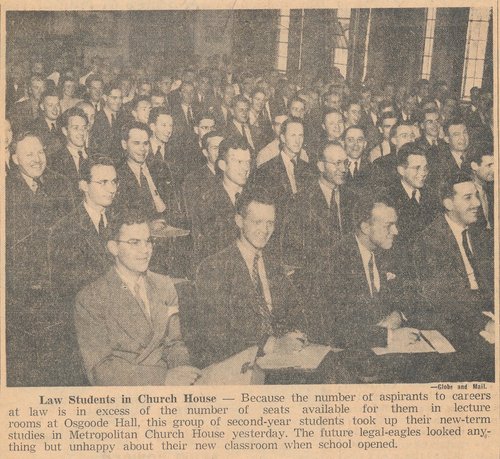Remembrance Day
This digital exhibit commemorates Osgoode's history during the first and second World War. Find the completed image series located in Osgoode Digital Commons' image galleries. Kaitlin Normandin and Meghan Carrington are credited with creating the original exhibit for Osgoode Hall Law School.
The Fighting Lawyer
World War I has begun and lecturer Holford Ardagh and other Toronto lawyers form the Osgoode Hall Rifle Association to train lawyers, clerks, and law students without previous military experience. Most of the Rifle Association’s training takes place at the Toronto Armouries just behind Osgoode Hall or at other military facilities. In this image "The Fighting Lawyer" 1914, soldiers practice with bayonets at the Toronto Armouries.
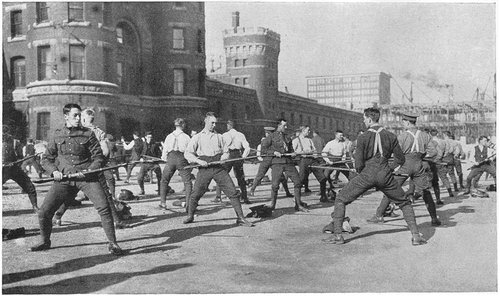
In Uniform
The 1916 graduating class, "In Uniform" photographs some students in military uniform.The Benchers (the board of directors that govern the Law Society of Upper Canada), suspend the rule that requires students to wear barristers' robes for the call to the Bar ceremony allowing them to appear in military uniform.

The Lost
Ninety-seven students are on active service on the Western Front. The photograph, "The Lost" (1915) captures the 113 names memorialized on a wall in Osgoode Hall’s Great Library. The Benchers voted to return the admission fees of all students killed in action to their families. In total, the Law Society of Upper Canada invested $70,000 in Canadian Victory Bonds.
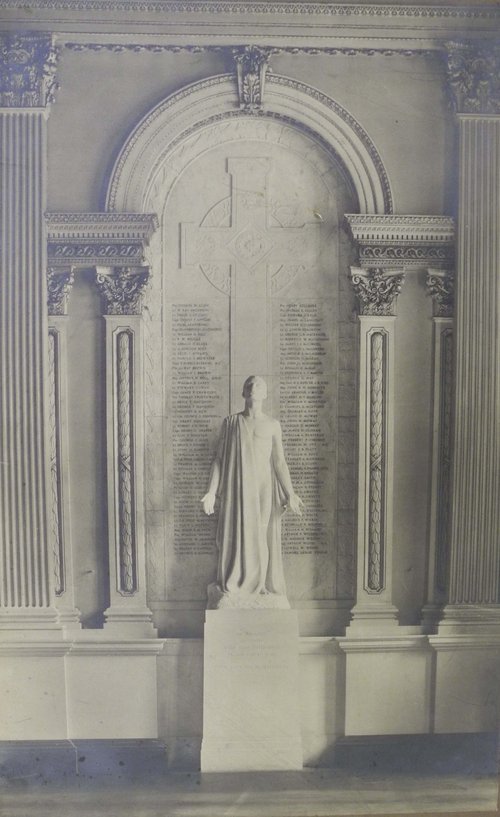
Return to Normalcy?
After years of low enrollment, the class of 1919 photograph "Return to Normalcy" depicts Osgoode coping with its largest classes. The Law School creates a special summer session for returning veterans that allows them to complete an academic year in a few months. The Law Society of Upper Canada waived school and articling requirements for veterans, and students receive one year of law school credit in recognition of their service.
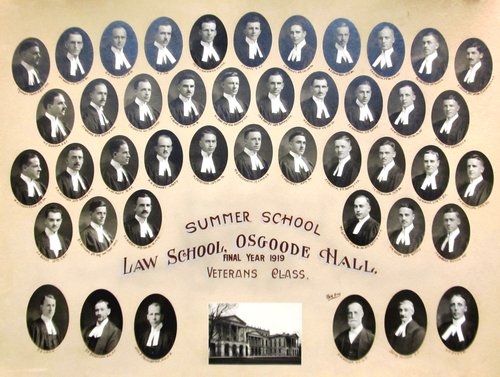
Playing Catch Up
As of December 1942, there are 118 men enrolled as students at Osgoode Hall who are members of Canada's armed forces. Similar to the First World War, Osgoode Hall forms its own contingent of the Canadian Officer’s Training Corps. In this image from 1940, "Playing Catch Up" officers take a group photo at the Niagara Camp.

Come On, Canada
The Law Society of Upper Canada forms the Special Committee on Wartime Educational Services. As a result, Osgoode Hall becomes one of the sponsors of an informal Commonwealth law school in overseas prison camps. Students write their law exams as a prisoners-of-war, proving that barring death, no one can escape finals. Volume 15 of the Obiter Dicta (1942) publishes a list of students serving in the Canadian Armed Forces, messages of encouragement from the Dean of Law, Dean Falconbridge, tongue-in-cheek editorials about ‘What to Do in an Air Raid,’ and ads for Victory Bonds. This victory bond ad below,"Come On, Canada!" appears in Volume 16, issue 1 in 1943.
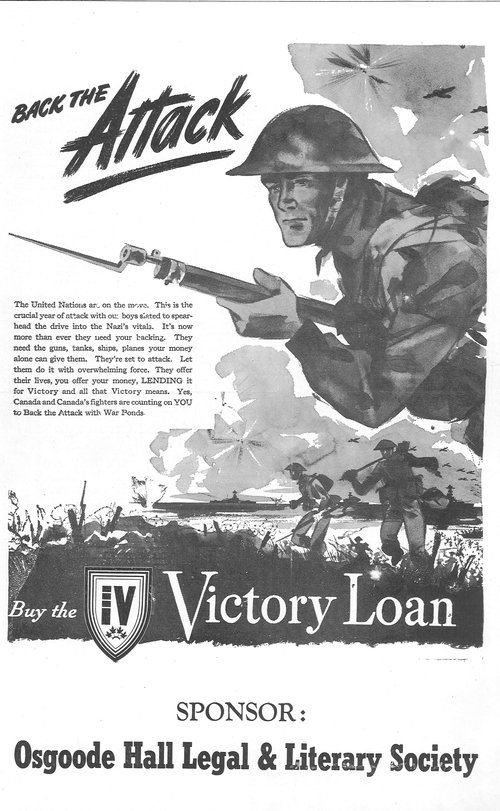
Hanging from the Rafters
The Law School agrees that unlike what was offered to returning World War I veterans, there will be no short-cut summer courses for returning students. Instead, plans are laid for refresher courses to help lawyers return to practice. The Law School experiences low enrollment throughout the war time, but the student body soon swells to over 700 students with the declaration of peace. Returning veterans take advantage of the benefits offered by the Veteran's Rehabilitation Act to receive a post-secondary education. The image "Hanging from the Rafters" (1947) photographs the overcrowded second year lecture class that had to take place at a Church House.
